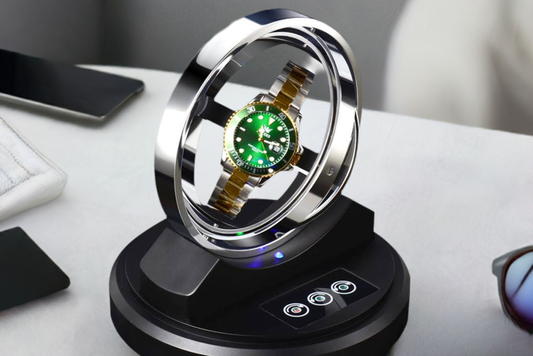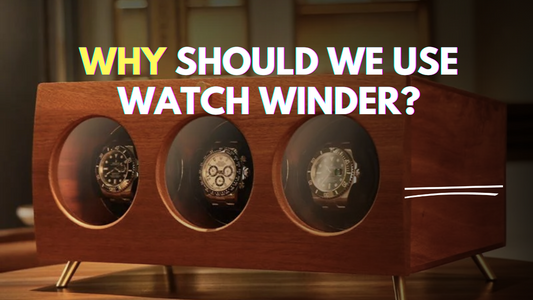Uncover the secrets to discerning genuine Rolex masterpieces from their imitation counterparts. With the proliferation of sophisticated fakes, knowing what to look for is crucial to ensure your investment is in the hands of authenticity. This comprehensive guide equips you with expert insights to spot the difference effortlessly.
The Hologram Test: A Telltale Sign of Authenticity
One of the most reliable methods to verify the authenticity of a Rolex is by examining the hologram on the watch's case back. A genuine Rolex features a sharply defined holographic crown that shifts with different angles. This sophisticated, three-dimensional image appears to move and change as you rotate the watch, surrounded by a series of concentric circles.
On the other hand, counterfeit Rolex watches often lack this intricate detail or have a poorly replicated sticker. The hologram may appear dull, flat, or distorted, and it may not shift or change as you view it from different angles. In some cases, the counterfeiters may not even bother to include a hologram, opting instead for a plain, unadorned case back.
For example, the Rolex Submariner features a hologram on the case back that is nothing short of breathtaking. The crown appears to leap off the surface, surrounded by perfectly rendered circles. In contrast, a counterfeit Submariner might feature a dull, two-dimensional sticker that lacks depth and dimensionality.
Credit: YouTube Channel - TechMagnet
Decoding the Serial and Model Numbers
Authentic Rolex watches feature deeply engraved serial and model numbers at specific locations. The serial number, typically between 4 to 8 digits long, is found on the inner rim of the watch case, between the lugs at the 6 o'clock position. The model number, usually a combination of letters and numbers, is typically located on the case back, near the top, and sometimes on the band clasp.
Genuine Rolex serial and model numbers are deeply etched, often with a slight rounded edge, giving them a smooth, precise appearance. This level of craftsmanship is difficult to replicate, making it a crucial indicator of authenticity.
Counterfeit Rolex watches often display shallow, acid-etched markings that resemble sandblasting. These engravings tend to be rougher and less refined, lacking the precision and depth found on genuine Rolex watches. Furthermore, the positioning of these markings is often incorrect, with serial and model numbers placed in the wrong locations or at incorrect angles.
For instance, the Rolex Submariner features a model number such as 126610LV, which is typically engraved on the case back. The serial number, which can range from 4 to 8 digits, is found on the inner rim of the case, between the lugs at the 6 o'clock position.
The Weight and Feel: A Testament to Quality
Real Rolexes are renowned for their exceptional craftsmanship and use of high-quality materials, which significantly contribute to their substantial weight. For instance, the iconic Rolex Submariner weighs around 155 grams, thanks to its 904L stainless steel case and band. This weight is a testament to the brand's commitment to durability and longevity.
Fake Rolexes often lack the heft and solidity of their genuine counterparts. Counterfeiters typically use cheaper metals or materials to reduce production costs, resulting in a noticeably lighter watch. For example, a counterfeit Rolex Submariner might weigh around 80-100 grams, significantly less than its authentic counterpart. When you lift a fake Rolex, it may feel hollow or lacking in substance.
To illustrate this point further, a genuine Rolex Daytona weighs around 140 grams, thanks to its 18k gold case and band. In contrast, a fake Rolex Daytona might weigh around 60-80 grams, a significant difference that can be felt when holding the watch in your hand.
The Heart of the Matter: Examining the Movement
Genuine Rolexes are renowned for their exceptional mechanical craftsmanship, and it is rare to find a quartz movement in an authentic Rolex. This distinction serves as a critical factor in identifying counterfeit models.
Rolex primarily employs mechanical movements, which are a hallmark of their luxury timepieces. Mechanical movements involve intricate mechanisms that harness energy from a mainspring, which is wound by the wearer's arm movements or through manual winding.
On the other hand, quartz movements, which are powered by batteries, are generally associated with more affordable and mass-produced watches. While some vintage Rolex models, such as the Oysterquartz, did feature quartz movements, these are relatively rare and typically command a premium price in the collector's market.
Rolex is known for its in-house movements, which are meticulously crafted and tested to ensure exceptional accuracy and reliability. For instance, the Rolex Calibre 3255, found in the Day-Date and Datejust models, boasts a precision of -2/+2 seconds per day, surpassing the official COSC certification standards.
The Sapphire Crystal Test: Scratch-Resistant Perfection
Modern Rolex watches, particularly those produced from the late 1980s onwards, feature scratch-resistant sapphire crystals. These crystals are highly durable and resistant to scratches, which is a hallmark of genuine Rolex watches.
Counterfeit Rolex watches often use inferior glass or acrylic materials for their crystals. These materials are more prone to scratches and damage, making them a clear indicator of a fake Rolex.
Another key detail to inspect is the laser-etched crown located at the 6 o'clock position on newer Rolex models. This intricate feature is often omitted in counterfeit watches, making it a significant distinguishing factor.
For instance, the Rolex Submariner features a sapphire crystal that is highly resistant to scratches and damage. The Submariner's crystal is designed to withstand the rigors of deep-sea diving, making it an excellent example of Rolex's commitment to quality and durability.
Attention to Detail: Crown Engraving and Bracelet Links
The crown of a genuine Rolex watch is a testament to the brand's attention to detail. The craftsmanship spares no detail, ensuring that even the small piece of metal on the side of the watch known as the crown is intricate and accurate. If you spot a watch with a smooth crown or one that seems plain or brushed over, this is a red flag.
A Rolex serial number is always engraved deeply into the metal, while fake watches have serial numbers that are simply etched with acid. Look for the serial number on the 6 o'clock side where the band connects to the lug. On a new authentic Rolex, the serial number is engraved deeply into the metal.
The bracelet links of a real Rolex watch are designed to operate smoothly and have a high-quality finish. Fake Rolex watches often lack this smooth operation and finish. For example, the hollow links found in older models like the Submariner reference 16610 are much lighter than the current lineup, which uses solid stainless steel links.
Another way to spot a fake Rolex is to hold it in your hand. A real Rolex uses high-quality metals, which means it will not be light. If the watch feels light in your hand, it was likely built with cheaper metal and is a fake.
The Seconds Hand and Cyclops Lens
On an authentic Rolex, the second hand will move in tiny ticks, which appear smooth at a glance. The seconds hand should glide around the face of the watch without pause. However, on a fake, you're likely to see the second hand tick along, stuttering its way around the face with every second that goes by.
The Cyclops lens proudly stands above the date window, bulging outward in a convex shape that notably enhances the date numerals with 2.5 times magnification. If the Cyclops lens lies flat without that characteristic magnification, it's time for a second glance. This could be a sign that the watch in your hands is masquerading as something it's not.
Micro-Etched Crystal and Color Check
Since the turn of the millennium, Rolex has added a subtle yet distinctive authentication feature to its watches. Beginning in 2002, the brand started to add the crystal over the dial with a small crown logo, precisely placed at the 6 o'clock position. This micro-etching is a testament to the brand's commitment to authenticity and quality.
Details like the color of the text dial can help identify a counterfeit in the blink of an eye. Take the Rolex Daytona Chronograph for example. On a genuine model, the word "Daytona" should appear in a darker shade of red, while a replica will display it in a bright red.
Buying Safe: Authorized Dealers and Professional Inspections
Authorized Rolex dealers are the safest and most reliable sources for purchasing genuine Rolex watches. These dealers are certified by Rolex and have undergone rigorous training to ensure that they can provide customers with authentic timepieces. When you buy from an authorized dealer, you can be certain that the watch is genuine and comes with the manufacturer's warranty.
While authorized dealers are the safest bet, reputable pre-owned watch sellers can also be a reliable source for purchasing genuine Rolex watches. These sellers typically offer pre-owned watches that have been thoroughly inspected and authenticated, ensuring that the watch is genuine and in good condition.
Professional inspections are an essential step in ensuring the authenticity of a Rolex watch. These inspections involve a thorough examination of the watch to verify its provenance and ensure that it is genuine. Professional inspectors use specialized tools and techniques to examine the watch's movement, case, and other components, comparing them to the manufacturer's specifications.
Debunking Myths: The Truth About "Perfect" Fakes
One common misconception is the idea of the "perfect" fake Rolex. Many people believe that counterfeiters have advanced so far that it is impossible to distinguish a genuine Rolex from a replica. However, this is not entirely true. While counterfeiters have significantly improved their techniques, experts can still spot discrepancies that give away a fake Rolex.
The serial number on a real Rolex is often compared to that of a replica. Upon close inspection, the fake serial number can be identified as not matching the authentic one. Additionally, the "Cyclops" lens over the date on a Rolex, which magnifies the date by 2.5 times, was previously a reliable indicator of authenticity. However, counterfeiters have now mastered this feature, making it less reliable as a distinguishing factor.
Another myth is that the movement on fake watches is never the same as the original. This is also false. Many luxury watch brands, including Rolex, purchase movements from ETA, the world's largest supplier of mechanical movements. Counterfeiters can obtain these movements or reproduce them, making it difficult to distinguish between the genuine and the fake.
Furthermore, the weight of a watch is often used to determine its authenticity. However, counterfeiters have found ways to replicate the weight of genuine watches by using the same materials and movements. This means that weight is no longer a reliable indicator of authenticity.
Conclusion
Mastering the art of distinguishing a real Rolex from a fake is a blend of knowledge and attention to detail. From the hologram test and serial numbers to the weight, movement, and sapphire crystal, numerous factors contribute to the authenticity of a Rolex timepiece. By carefully examining these details and purchasing from trusted sources, such as authorized dealers or reputable pre-owned watch sellers, you can significantly reduce the risk of falling victim to a counterfeit Rolex.
Remember, while counterfeiters have made significant strides in replicating luxury watches, experts can still identify discrepancies that distinguish a genuine Rolex from a replica. Stay vigilant, and let the authenticity of your Rolex shine. With this comprehensive guide, you're now equipped to navigate the world of luxury watches with confidence, ensuring your investment in timeless elegance is genuine.
We hope you found this in-depth exploration of fake vs. real Rolex watches informative and enlightening. If you have any personal experiences, insights, or questions related to this topic, we'd love to hear from you in the comments section below. Your input and engagement help enrich the discussion and provide valuable perspectives for fellow watch enthusiasts. Don't forget to share this article with your friends and colleagues who might find it useful in their quest for authentic luxury timepieces. Together, we can spread awareness and protect the integrity of the Rolex brand.
Frequently Asked Questions
1. Can a fake Rolex have a real movement?
While it is possible for a fake Rolex to have a genuine movement, it is not common. Counterfeiters often use cheaper, lower-quality movements to reduce production costs. However, some high-end replicas may use genuine ETA movements or even replica in-house movements. It is essential to have the watch inspected by a professional to determine the authenticity of the movement and the watch as a whole.
2. How much does a genuine Rolex cost?
The price of a genuine Rolex varies depending on the model, materials, and complications. Entry-level Rolex watches, such as the Oyster Perpetual, start at around $5,000, while more complex models, like the Daytona or the GMT-Master II, can cost upwards of $10,000. Vintage and limited-edition pieces can command even higher prices, often reaching six figures.
3. Is it legal to buy or sell a fake Rolex?
No, it is not legal to buy or sell a fake Rolex. Counterfeiting is a form of intellectual property theft and is illegal in most countries. Buying or selling counterfeit goods can result in legal consequences, including fines and even imprisonment. It is always best to purchase genuine Rolex watches from authorized dealers or reputable pre-owned watch sellers.
4. How can I ensure I'm buying a genuine Rolex?
To ensure you're buying a genuine Rolex, follow these steps:
- Purchase from an authorized Rolex dealer or a reputable pre-owned watch seller.
- Request documentation, such as the original warranty card, receipt, or certificate of authenticity.
- Have the watch inspected by a professional before making the purchase.
- Familiarize yourself with the details and characteristics of genuine Rolex watches, such as the serial and model numbers, weight, and movement.
- Be cautious of deals that seem too good to be true, as they often are.
5. What should I do if I suspect I have purchased a fake Rolex?
If you suspect you have purchased a fake Rolex, take the following steps:
- Contact the seller immediately and express your concerns. If you purchased from a reputable dealer, they should be willing to work with you to resolve the issue.
- Have the watch inspected by a professional to confirm its authenticity.
- If the watch is confirmed to be a fake, request a refund from the seller. If the seller is unwilling to cooperate, consider taking legal action.
- Report the seller to the appropriate authorities, such as the local police or the brand's legal department, to help combat counterfeiting.
Remember, prevention is the best approach. By educating yourself on the characteristics of genuine Rolex watches and purchasing from trusted sources, you can minimize the risk of falling victim to counterfeiting.




